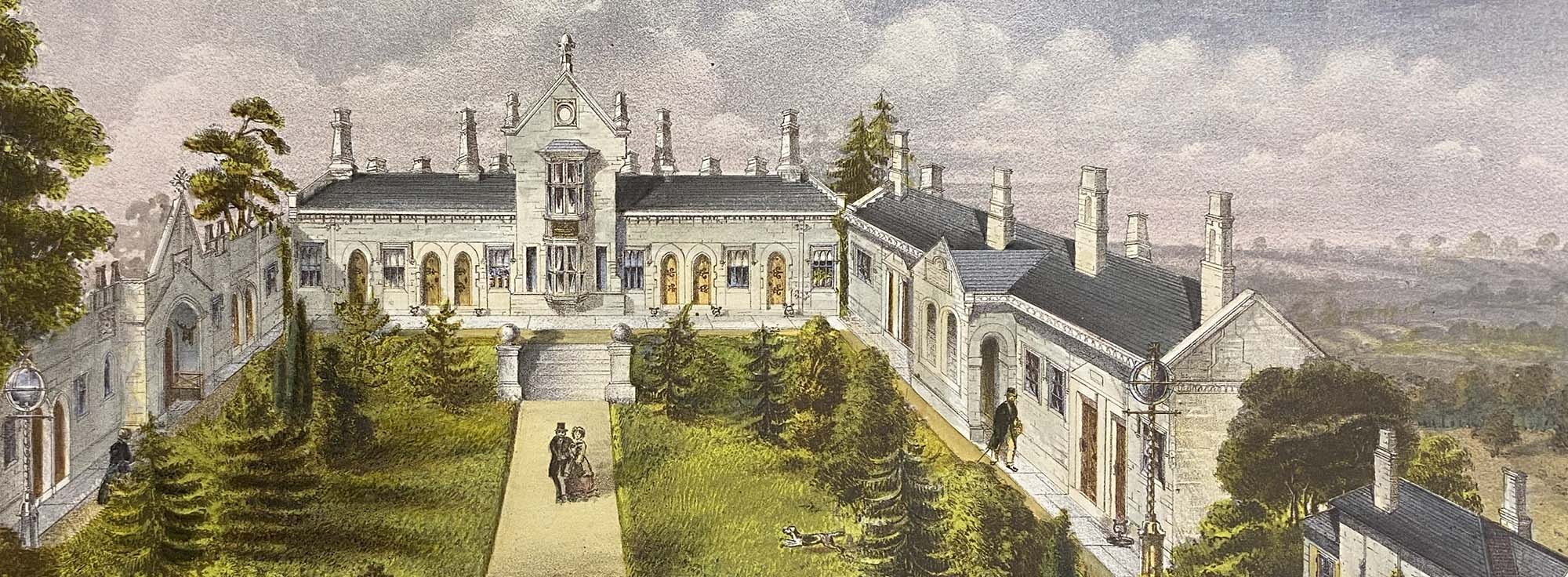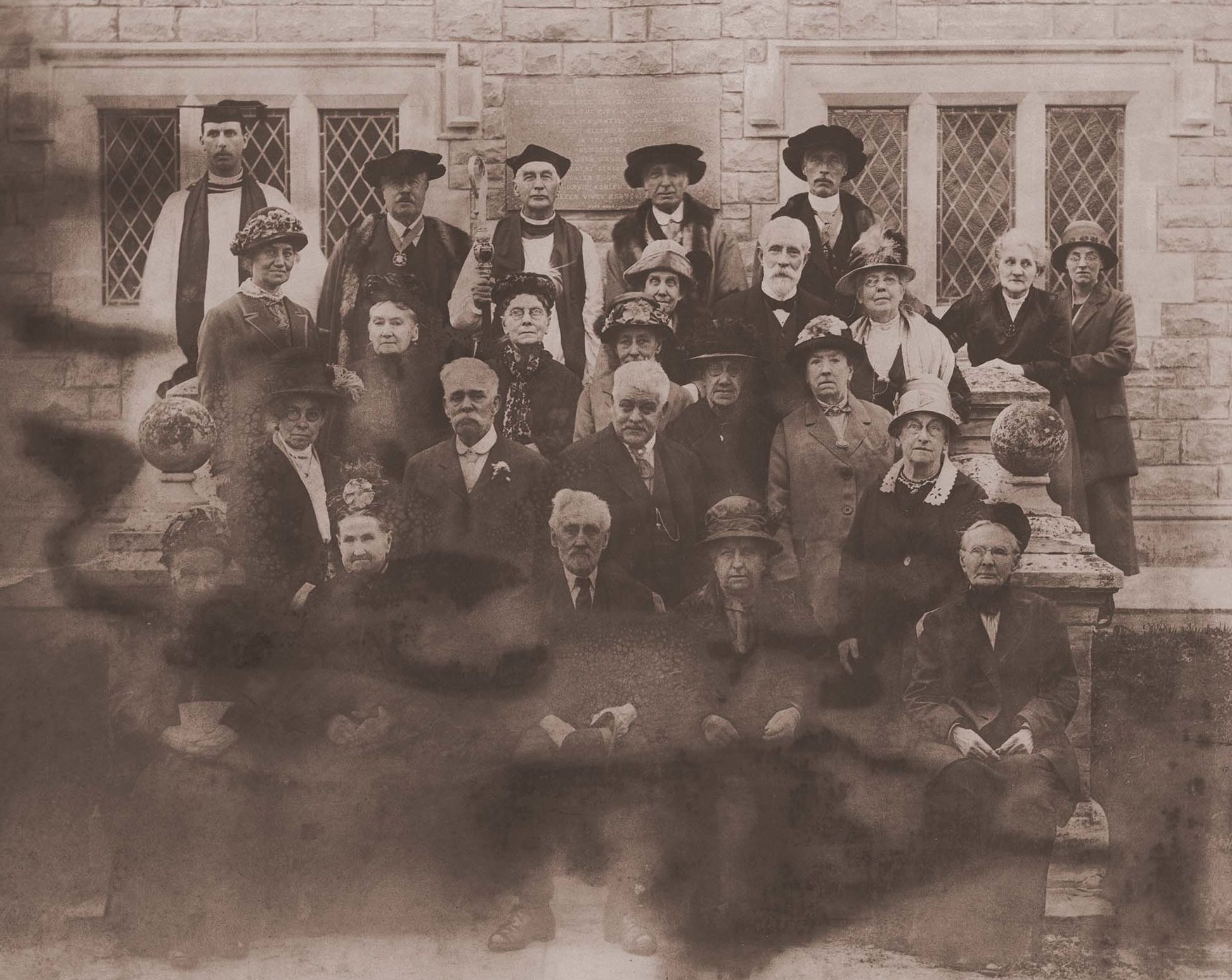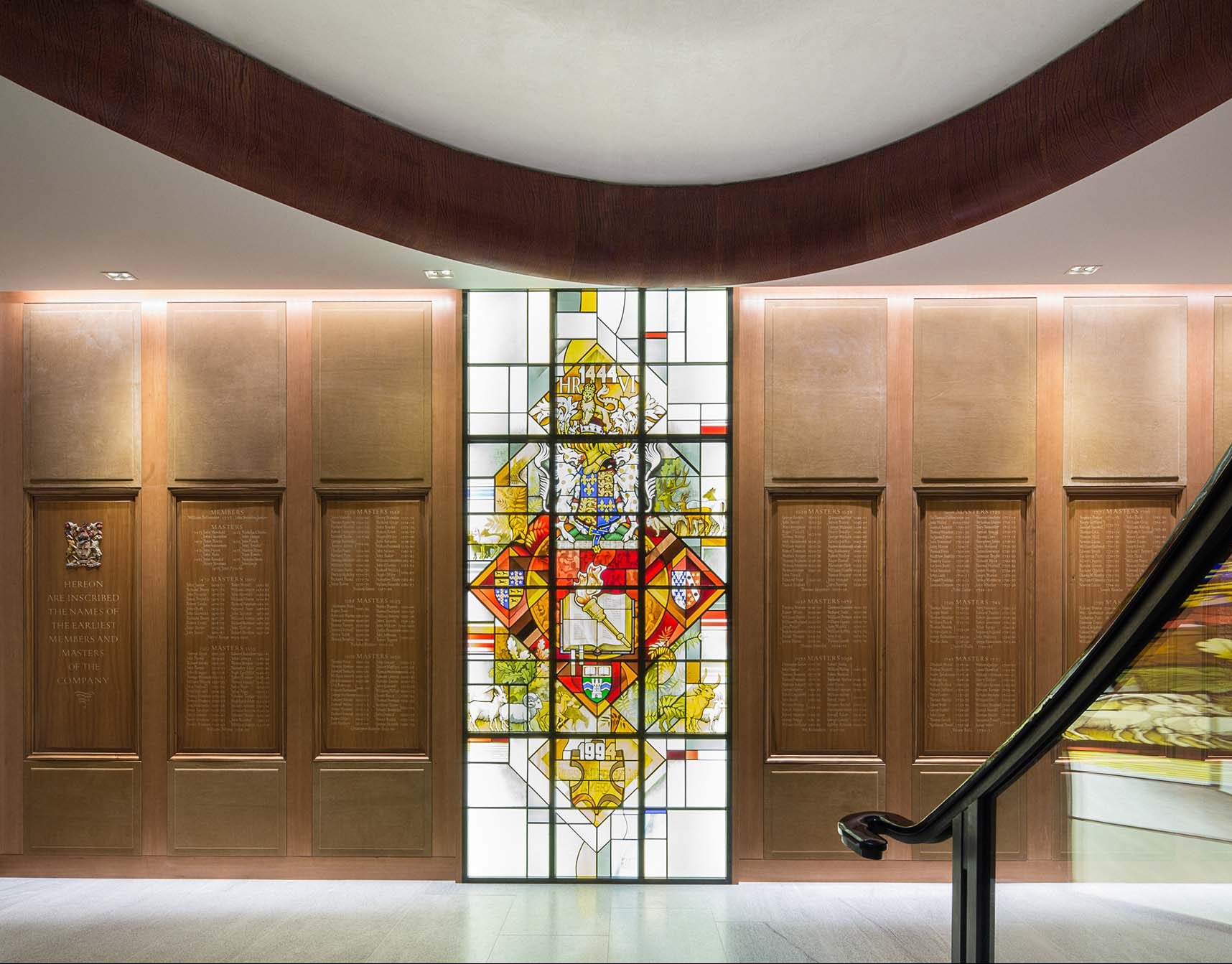
The story of Leathersellers’ Close begins in 1543 and is tied up inextricably with the move into the second Leathersellers’ Hall, the former nunnery of St Helen’s. The Company owes John Hasilwood a great deal, as he donated £300 to the Leathersellers to buy the desirable 2-acre site of St Helen’s – home of the Leathersellers ever since. In return he required the Company to set up almshouses for ‘vii pore folkes’, four men and three women, who were to get eight pence a week each, plus a winter fuel allowance of two sacks of coal between Hallowmas (1 November) and Christmas.
It has long been a mystery why Hasilwood –never, as far as we know, a Leatherseller himself –chose to favour the Company. He lived at Waltham Cross in Essex, studied law at the Middle Temple, and was an MP for Buckingham in the 1529 Parliament. A clue has recently been found, however. Buckingham was represented by two MPs at that time, and the other was Edward Lloyd, who certainly was a Leatherseller (Third Warden in 1544)–so Hasilwood’s interest in our Company may stem from this friendship. These first almshouses, Hasilwood’s almshouses, lay behind St Ethelburga’s Church, but no picture of them survives. After two centuries of administering them, in 1752 the Leathersellers moved the seven residents into better premises at Clark’s Court, an alley way off Bishopsgate. These were in use until 1866 when it was decided to consolidate almshouses on the Barnet site. The other great benefactor of the Leathersellers’ Company almshouses, three centuries later, is, of course, Richard Thornton.
In 1837 the Company decided to build a single row of six new alms houses at Barnet, on land owned since 1603. Barnet in 1837 was still a rural village, and a much healthier location than the overcrowded City with its poor sanitation and frequent epidemics. The almshouses were built by Ward & Sons in the Gothic style, by then considered the most appropriate architectural style for buildings of a morally-uplifting nature. They were “for the residence of poor persons of good character” who were over 60 and had a connection with the Company as Freemen, Liverymen, or their widows. The first stone was laid on 25 July 1837 by the Master, Richard Thornton, using the ceremonial trowel depicted on the cover of this Review. The buildings cost £1208 and Thornton immediately announced that he would fund this entirely himself. Consequently the Court passed a resolution that “to perpetuate a grateful sense of Mr Thornton’s liberality, these Almshouses be called the Thornton Almshouses”.
An ‘Asylum for the Aged Poor’
After advertising in The Times and interviewing 28 elderly applicants at the Hall on 18 July 1838, the three men and three women deemed most deserving were admitted as the first residents of this new ‘Asylum for the Aged Poor’. All were Freemen or their widows: Robert Heslop (aged 86), William Clarke (76), William Bradley (72), Ann Round (73), Elizabeth Wood (80) and Comfort Mary Ashman (79). Of these, the longest to survive was Clarke, who died in 1851 aged 89, after 13 years at Barnet. A place in our almshouses was always highly sought-after. There was no rent to pay, an iron bedstead was provided, and each resident received a modest pension of 10 shillings a week per person in 1838 plus two tons of coal a year. They had secure tenure and could only be evicted for misdemeanours, but these were rare.
Most residents lived quiet, unremarkable lives at Barnet, but trouble was occasionally caused by drinking –the Black Horse inn lay just across the road –and in 1895 Mrs Catherine Astle, 72, had her monthly allowance reduced by eight shillings as a penalty for her ‘intemperance’. In 1866 John Ross, aged 74, was summoned from Barnet to appear before the Court at Leathersellers’ Hall ‘to answer a charge of being intoxicated and of annoying the other inmates, and he was told that in the event of another complaint he would be dis missed’. He must have behaved himself after that as he was still living in the almshouses when he died nine years later. In 1850 Thornton donated a further £500 towards building a second row of six almshouses opposite the first terrace, and in 1866 (again at Thornton’s initiative, though he had died by the time the work began; the Company met the costs) a third row of seven almshouses was built –this time by Dove Brothers of Islington, a family connected with the Leathersellers since 1712. This final, northern wing linked up the other two rows, and housed the seven residents from Hasilwood’s almshouses after they were moved out from the City. A distinction between the Hasilwood and Thornton almshouses was maintained at Barnet for many years, but in time they became generally known as the Leathersellers’ Almshouses, and in 1962 were renamed Leathersellers’ Close.

Sunday Best
A Lodge was added to the corner of the site in 1859, and after the northern wing was completed the almshouses took on much of the appearance it retains today. Appearances can be deceptive, however, as the middle section has been much renovated and the two side wings were entirely rebuilt in the mid-1960s (the buildings were also badly damaged in the London Blitz, when two landmines exploded in Thornton Road on 16 November 1940).
In 1926 the wrought-iron gates from the entrance to St Helen’s Place were transferred to Barnet and installed near the Lodge. In the same year, the focal point of the almshouses was altered when, thanks to a donation from Frederick Lionel Dove, Master at the time, a new chapel was built (an earlier, more modest chapel had by 1899 become a meeting room). The Bishop of London came to dedicate the chapel and a group photograph was taken.
Though damaged, this is the only old photograph we have showing the residents themselves (above), here all dressed up in their ‘Sunday Best’. By 1866 we had twenty almshouses at Barnet. Though these were small, wives, children and grandchildren often lived there too, so the total number of residents was higher –36 are shown in the 1881 census. In 1866 the Leathersellers decided to pay £25 a year for a Medical Attendant to look after the residents’ medical needs, a greatly appreciated bonus. In an age before state old age pensions and a free National Health Service, old age was feared by many. The loss of income when paid employment was no longer possible could lead to complete destitution and the humiliation of entering the Workhouse. Similarly, medical bills were beyond the means of many, with the Workhouse Infirmary an option only in extremis. Against this backdrop, residents received a place for life in the almshouses.
A Remarkable Wedding
Many almshouse founders specified that residents should be all men or all women. Abraham Colfe’s almshouses at Lewisham, for example, were for six elderly women (the Leathersellers selected one of the six, but the local parish chose the other five). Hasilwood’s and Thornton’s almshouses, however, have always included both sexes. We know of at least one marriage between residents at Barnet: in 1931 John Tomson of almshouse no. 14 and Mrs Lily Mansfield of almshouse no.12 sought the Company’s permission to marry and move in together at no.14. Aged 71 and 60 respectively, both lived on at Barnet into their 80s. Another late-flowering romance at Barnet involved ‘a widower ninety-one years of age and a spinster of seventy three summers’, as a report in the local press headlined ‘Remarkable Wedding’ put it. Henry Harbord, a former ropemaker born in Bermondsey, had already been resident for 26 years when he married Mary Ann Easton in 1898, though she was not herself an almswoman. Bride and groom were in good enough health to walk to the Register Office and back, but had only one year of married life at Barnet before Henry died aged 92.
Many Barnet residents have lived to old age and quite a few have lived into their 90s, including one Past Master, Dr Walton Rex Reid (Master 1947-48), who spent his final six years there and died aged 98 in 1975. The longest resident, William Pearson, died, aged 95 in 1913, after 35 years at Barnet. So far only one centenarian is known of, Austin ‘Micky’ Finn, a recent resident who lived to be 101 after 22 years at Barnet. With increasing longevity, we are likely to see more in the future. Standards of living have risen, and the modern state provides many of our medical and social needs, but our almshouses at Barnet still provide a safe and comfortable sheltered home for around twenty elderly people today.
Here they can maintain their independence and receive friendly assistance when required. The Company keeps a watchful eye on the welfare of residents and the Master and Wardens visit regularly, with residents being taken out for a day, somewhere different each year, for an annual Leathersellers’ treat. This haven of tranquillity set in beautiful gardens has been a happy home for many hundreds of elderly residents since 1838 and continues to be a long-term commitment to an enduring charitable legacy.
READ MORE

The Seventh Hall
Leathersellers’ Hall is the seventh since the Leathersellers’ Company was incorporated by royal charter in 1444.

Leathersellers’ Scholarships at Colfe's School
Celebrating the long-term success of the Leathersellers’ Scholarships at Colfe’s School.

Unrestricted grant funding at the Leathersellers' Federation of Schools
At the Leathersellers’ Federation of Schools in Lewisham, unrestricted grant funding is helping pupils learn, thrive, and achieve their potential.